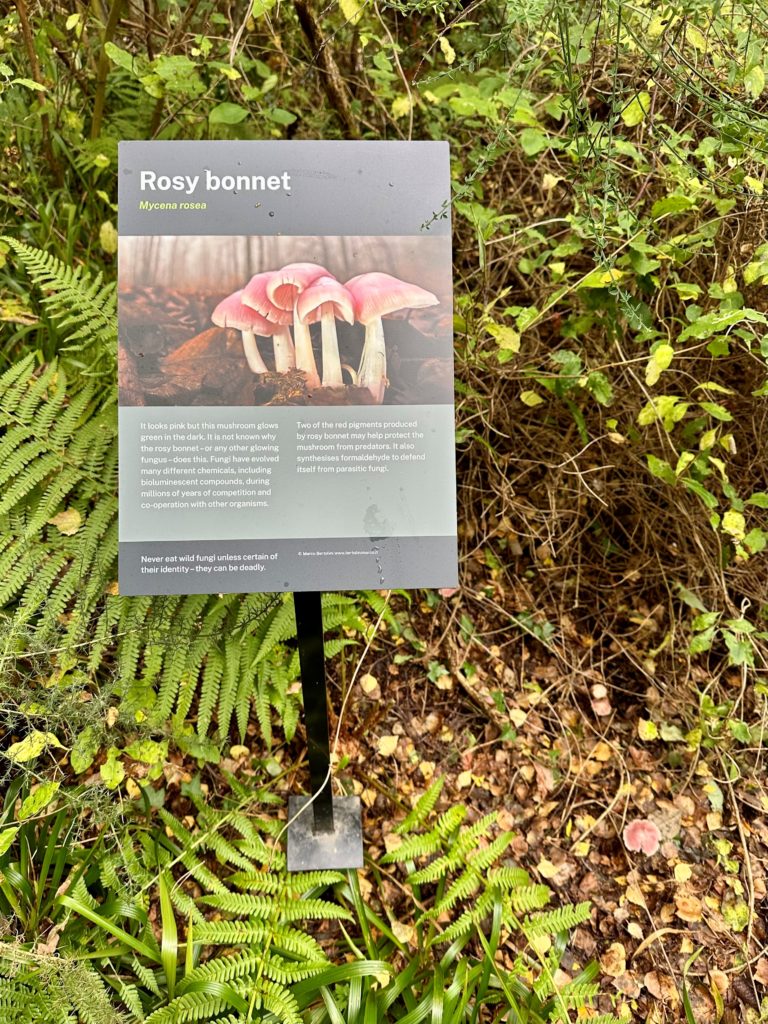The Garden’s Visitor Welcome Team is busy deploying a new set of interpretation panels to highlight the seasonal interest that fungi bring to the Garden. The normally overlooked fungi tend to undergo a flourish of activity in autumn as many of the larger and more showy species ‘fruit’ at this time of year.
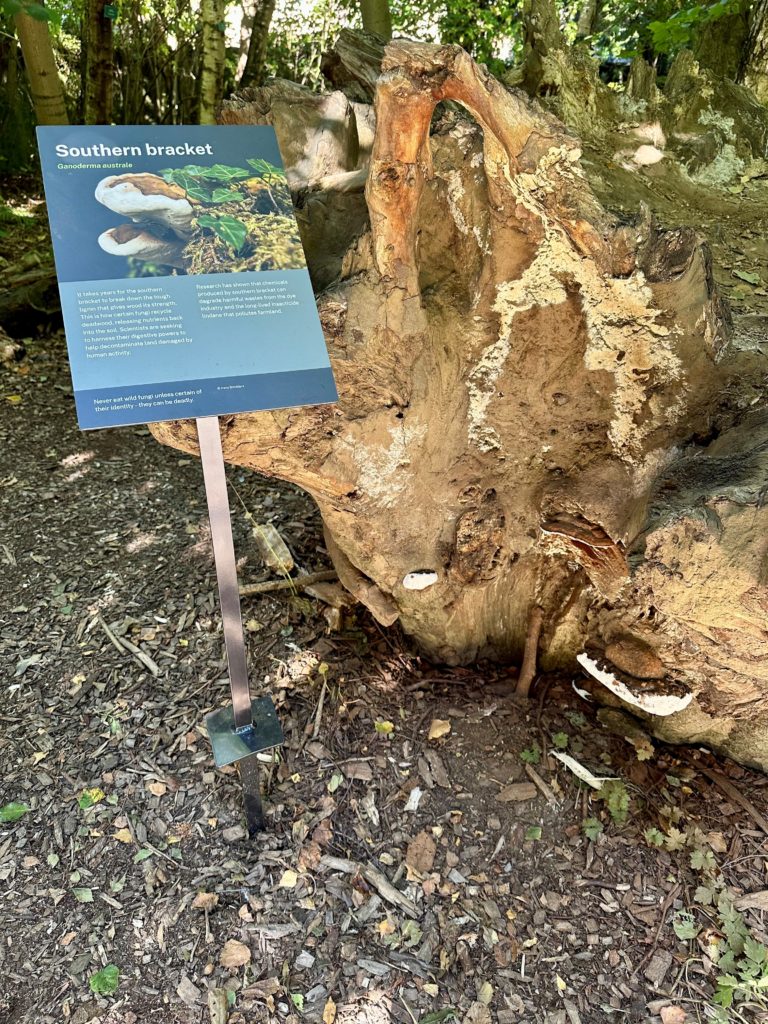
Some species, such as southern bracket (Ganoderma australe), have long-lived, woody fruiting bodies that expand in size year by year. However, many fungi appear briefly and are gone within a few days. This ephemeral habit makes them ideal for a rapid deployment and removal approach to interpretation. This really only works with a dedicated team of fungus spotters who can quickly act when new fungi appear suddenly and then, just as quickly, disappear.
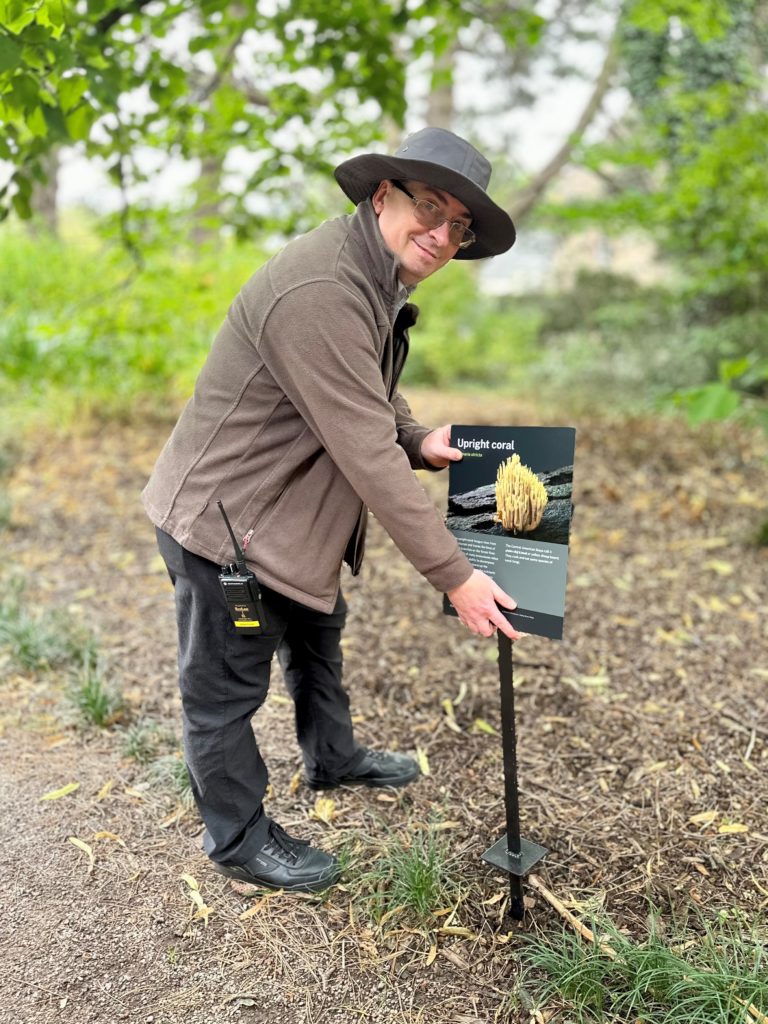
The patrols of the Visitor Welcome Team and the fungal interests of some of the team members presented the perfect opportunity to do something that very few botanic gardens have managed to do well – interpret seasonal interest in a reactive and dynamic fashion. Tsukuba Botanical Garden in Japan is the only other garden we are aware of that has provided interpretation of fungi, although others have no doubt done the same.
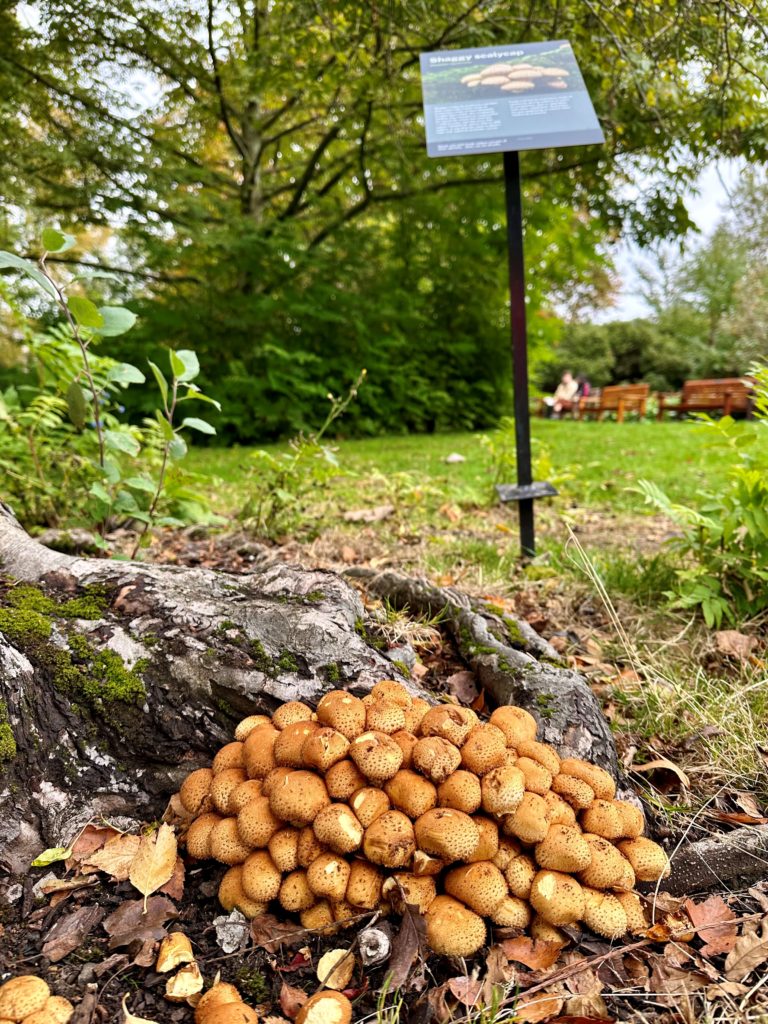
The set of interpretation panels was developed from a hit list of species that we know are likely to put in an appearance at some point in the year. The set numbers about 30 different fungi and includes what is perhaps the best known fungus of all – fly agaric (Amanita muscaria) – with the distinctive red cap and white spots. The images used on the panels were selected by the Visitor Welcome Team to supplement what could be seen in the Garden as living fungi can rapidly go past their best or be eaten by slugs.
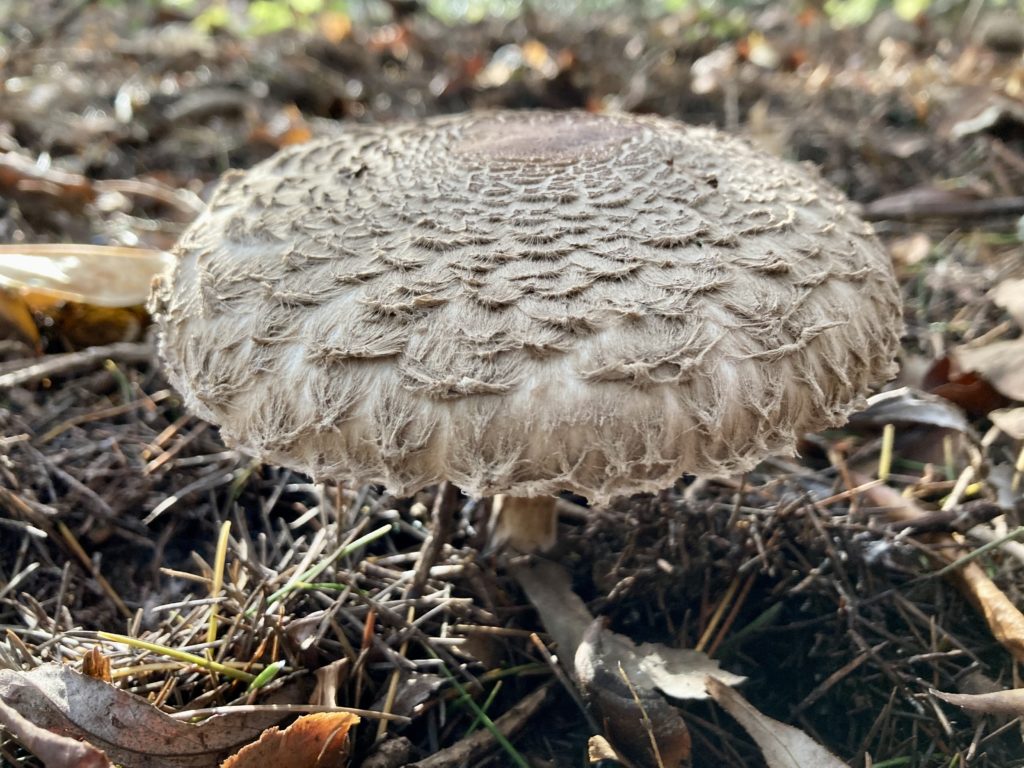
The project has been a model of collaboration across different sectors of the Garden. It is a great example of the coming together of different skills and responsibilities to provide something unexpected for visitors that will feel special because it probably won’t be visible next week.
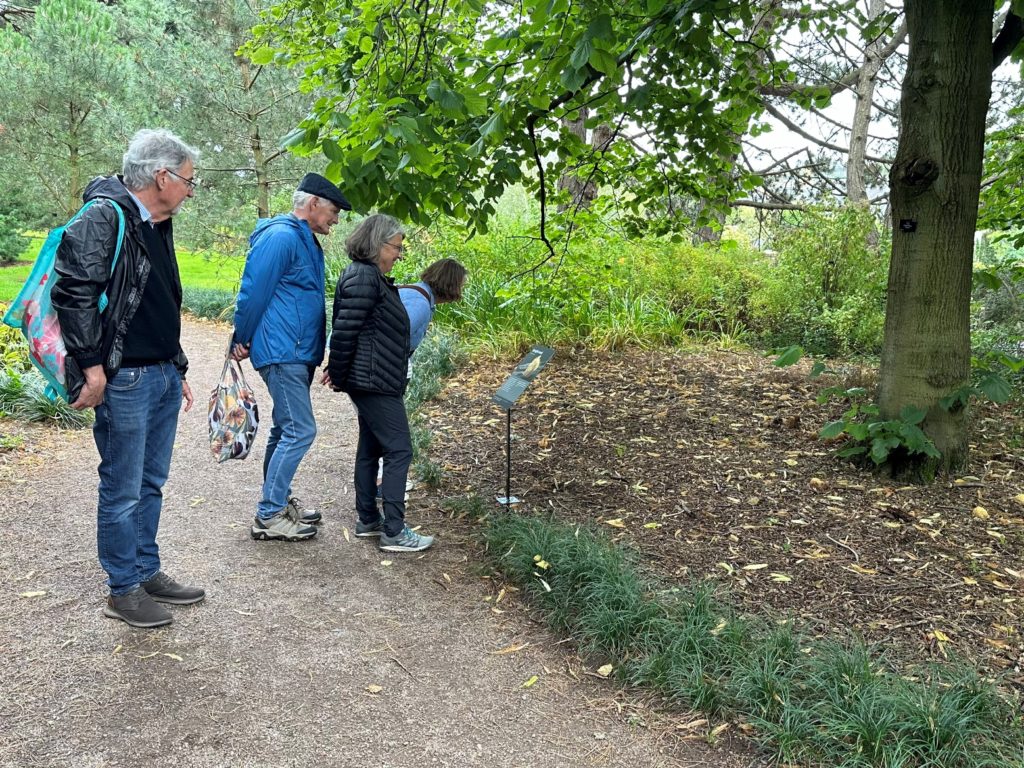
Keep your eyes peeled for the signs and for any interesting fungi. We want to know what is out there so we can share these curious and vitally important organisms that are not plants or animals but their very own kingdom of life.
